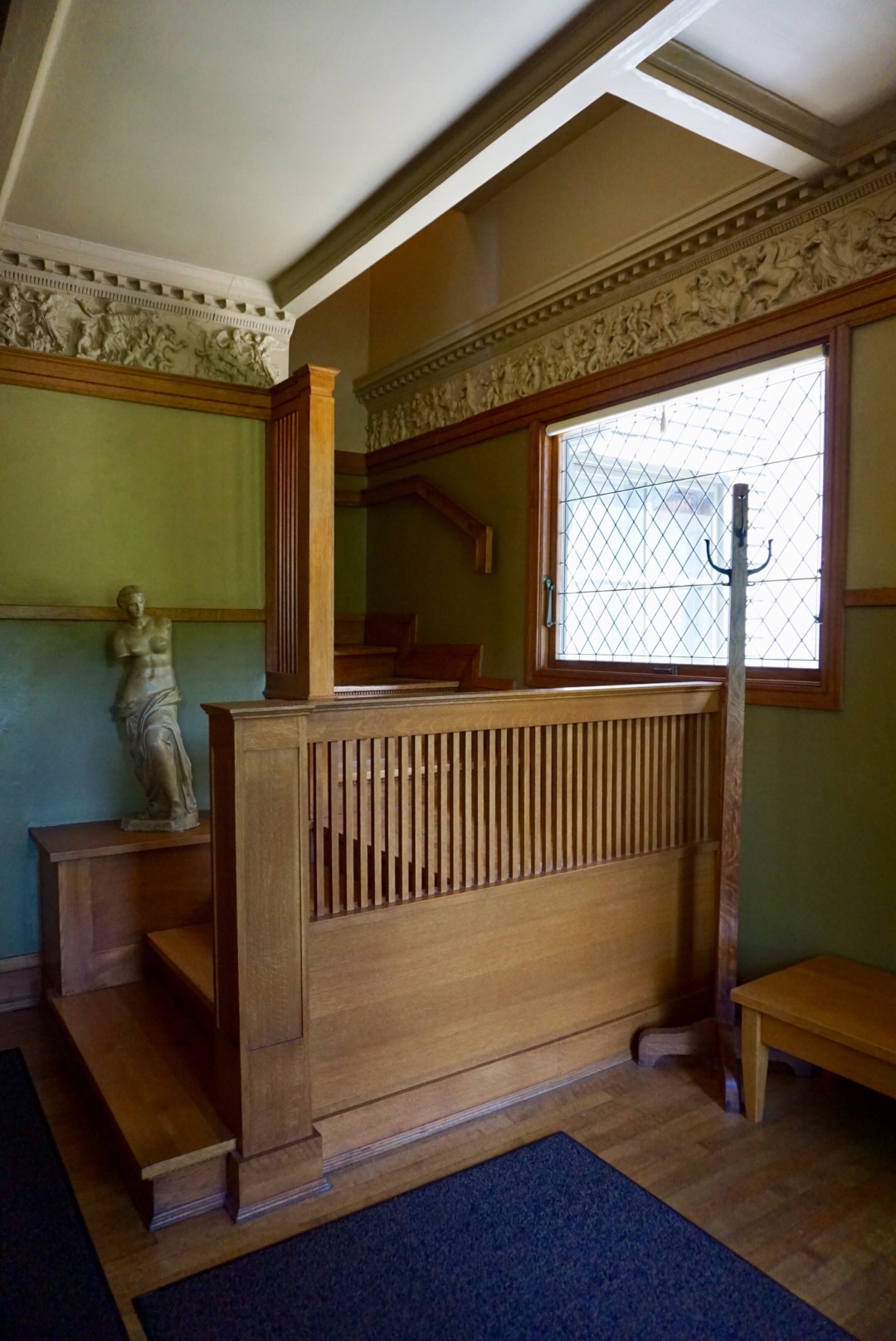Nature is my manifestation of God. I go to nature every day for inspiration in the day’s work. I follow in building the principles which nature has used in its domain.
Frank Lloyd Wright
It’s strange that someone born in the 19th century, who lived some of his adult life without electricity, went on to design the iconic Guggenheim Museum in Manhattan.
Frank Lloyd Wright, perhaps America’s greatest architect, lived and worked in Oak Park for about twenty years with his family. I did a guided tour of his home and office when I was in Chicago.
Oak Park, a leafy affluent suburb, is home to the world’s largest collection of Wright designed buildings and houses, with 25 structures built between 1889 and 1913. Wright developed his Prairie style of architecture here.
Some of the houses (the “bootleg” houses) were designed clandestinely by Wright. He told his employer (who gave him a loan at the age of 22 to build his house) that he would work only for them. When his boss, during a walk around the neighbourhood, saw a house that looked suspiciously designed by Wright, he confronted Wright who, not being able to deny the accusation, was immediately sacked. Whether his boss knew that Wright was destined for greater things, we don’t know.
When Wright designed his own house, he had it wired for electricity although houses did not have electricity at the time. When electricity finally came to Oak Park, the house was plugged into the grid. A few years after the house was built, he extended it for his expanding family and added a studio/office.
Growing up, Wright was obsessed with geometry, in particular circles and squares and their three dimensional equivalent. These are repeatedly seen in his house.
Wright tried to integrate houses with their surroundings. For instance, he placed the house not at the centre of a plot of land but in a corner. He said, “No house should ever be on a hill or on anything. It should be of the hill. Belonging to it. Hill and house should live together each the happier for the other.”
The colours he chose were not conventional at the time. The exterior of his house is green. Wright also thought the roof gable (the triangular part of the roof) ate into the space within a house and left a room (the attic) which was used merely for storage. In his house, the gable encompasses the first floor.
Because electricity wasn’t widely available at the time, Wright made use of natural light and, in particular, the different shades during the day. He used shaded windows to take away some of the brightness when necessary. The electric lights were built into the ceiling so that, when switched on, the light was diffused.
Unusually for the time, Wright built recessed cupboards into the bedrooms. These, over the years, changed as his family grew. He eventually had seven children.






















One thought on “Truth is life”